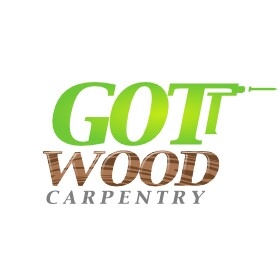Building a deck? If you’re in it for the long haul, you better pick materials that can take a punch from Mother Nature. Whether it’s blazing sun, relentless rain, or salty ocean air, your deck needs to hold up—beautifully and reliably. So, let’s talk about the 8 weather-resistant carpentry materials that can help your deck go the distance.
And hey, we’ll also throw in some real-world advice and tips from the pros at Got Wood Carpentry Inc.—because, let’s face it, they know a thing or two about long-lasting decks.
Why Choosing the Right Decking Material Matters
Decks aren’t just a home accessory—they’re an investment. The material you choose determines how long it lasts, how it looks over time, and how much TLC it’ll demand. Some materials warp, rot, or fade after a few seasons, while others keep their cool year after year.
What Makes a Material Weather-Resistant?
Let’s clear something up: not all “wood-looking” materials are equal when it comes to braving the elements. Weather resistance depends on three main things:
Moisture Resistance
If water seeps in, you’re in for warping, swelling, or even mold. You want materials that repel or tolerate water like a champ.
UV Stability
The sun is harsh, especially in tropical or high-exposure areas. UV-resistant materials won’t turn gray or brittle with time.
Insect Resistance
Insects love munching on some woods—but not all. The right decking material keeps termites and other critters away.
1. Pressure-Treated Lumber
Pros and Cons of Pressure-Treated Wood
Pressure-treated wood is probably the most common decking material. Why? It’s affordable, accessible, and treated to resist rot and bugs. But—here’s the kicker—it’s not 100% foolproof. You’ll need to seal it regularly to keep it looking good.
Best Uses for Pressure-Treated Decks
It’s perfect for budget-conscious builds or if you’re adding decking to rental properties where maintenance might be limited. Want to upgrade its longevity? Pair it with tips from our woodworking education section.

2. Composite Decking
Why Composite Decking Is So Popular
Made from a mix of wood fibers and plastic, composite decking is a hit for low maintenance and high style. It mimics wood without the constant upkeep.
Maintenance Tips for Composite Decks
A quick wash a couple of times a year and you’re good to go. No staining, no sealing. It’s also an ideal pick for homes with pets or lots of foot traffic. Learn how we use it in our residential carpentry projects.
3. Tropical Hardwoods (Ipe, Teak, Mahogany)
Pros of Using Tropical Hardwoods
Talk about strength and beauty! These dense woods are naturally resistant to water, insects, and decay. Plus, they offer rich colors and striking grain patterns.
Installation Considerations
Be prepared: they’re heavy and can be hard on tools. But if you’re aiming for a high-end look with serious longevity, they’re worth it. Ideal for luxury backyard spaces.
4. Cedar Wood
Natural Resistance to Rot and Insects
Cedar has a sweet spot in the decking world. It’s naturally resistant to rot and insect damage, thanks to its aromatic oils. Plus, it’s lightweight and easy to work with.
Tips to Extend Lifespan
It will silver with age, unless you seal or stain it regularly. Want to keep that golden glow? Check out our decking and outdoor structures guide for sealing tips.
5. Redwood
Sustainability & Aesthetics
Redwood has long been a favorite in California-style homes and classic homes. It’s beautiful, sustainably harvested in some regions, and weather-resistant by nature.
Weathering Performance
Like cedar, redwood will gray if not treated. But treated right, it can handle decades of sun and rain.
6. PVC Decking
100% Synthetic and Why It Works
PVC decking is plastic, plain and simple. That means no rot, no splinters, no bugs—ever. It’s also a winner in high-humidity areas.
Great for Coastal Areas
Live near the ocean? PVC is practically immune to salt damage. Great for outdoor carpentry near the beach.
7. Aluminum Decking
The Ultimate in Durability
Aluminum is gaining ground in the decking world. It’s waterproof, rust-proof, and slip-resistant—even when wet. You’ll never need to stain or seal it.
Modern Look with Minimal Maintenance
Want something ultra-modern with a sleek profile? Aluminum’s your answer. Plus, it won’t catch fire, which adds safety in dry, fire-prone regions.
8. Modified Wood (Thermally Treated or Acetylated)
Enhanced Performance in Harsh Climates
Modified wood is a high-tech solution. These woods are treated (not with chemicals, but heat or vinegar-like acid) to resist swelling, shrinking, and decay.
Eco-Friendly Advantages
They’re a greener choice with impressive durability and minimal maintenance. A great option if you’re prioritizing sustainability and avoiding woodworking errors.
How to Choose the Best Material for Your Deck
It’s tempting to go with what looks good—but that’s just one piece of the puzzle.
Location and Climate
Hot and humid? Cold and wet? Your location should guide your choice. For example, decking in Hawaii needs to fight humidity and sun.
Budget and Maintenance Preference
Love DIY projects? Then wood might work. Want to set it and forget it? Go composite, PVC, or aluminum.
Pro Tips from Got Wood Carpentry Inc.
Need expert advice or custom work? The crew at Got Wood Carpentry Inc. can help with everything from commercial carpentry to custom furniture and bathroom carpentry. They’ve built decks that withstand Hawaii’s wildest weather.
Looking for more beginner tips or outdoor backyard ideas? Their blog is full of gold.
Conclusion
When it comes to decking, durability isn’t just nice—it’s necessary. Whether you’re drawn to the rich look of hardwoods or the low-maintenance appeal of composites and synthetics, these 8 weather-resistant carpentry materials will have your back (and your backyard) for years to come.
Before you buy, weigh the pros, cons, and your climate. And remember, you’re not in this alone—Got Wood Carpentry Inc. has your back.
FAQs
1. What is the most weather-resistant deck material?
PVC and aluminum are the top choices for extreme weather resistance.
2. Can I mix decking materials in one project?
Absolutely! Many modern decks combine wood with metal or composite accents.
3. How often should I seal a wood deck?
Typically once a year for maximum protection—especially for cedar or redwood.
4. Is composite decking slippery when wet?
It can be, but textured varieties offer improved traction.
5. What’s the most eco-friendly decking option?
Modified wood and sustainably harvested hardwoods are top picks.
6. Does aluminum decking get hot in the sun?
Yes, but powder-coated finishes can help reduce heat absorption.
7. Can Got Wood Carpentry Inc. help with small deck repairs?
You bet. From full builds to quick fixes, they’re your go-to for residential and custom carpentry.


